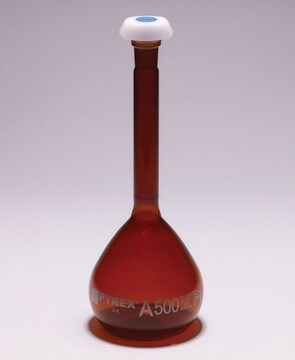442676
Heptadecane
analytical standard
About This Item
Prodotti consigliati
Grado
analytical standard
Densità del vapore
8.3 (vs air)
Tensione di vapore
1 mmHg ( 115 °C)
Confezionamento
ampule of 1000 mg
tecniche
HPLC: suitable
gas chromatography (GC): suitable
Indice di rifrazione
n20/D 1.436 (lit.)
P. ebollizione
302 °C (lit.)
Punto di fusione
20-22 °C (lit.)
Densità
0.777 g/mL at 25 °C (lit.)
applicazioni
environmental
petroleum
Formato
neat
Temperatura di conservazione
room temp
Stringa SMILE
CCCCCCCCCCCCCCCCC
InChI
1S/C17H36/c1-3-5-7-9-11-13-15-17-16-14-12-10-8-6-4-2/h3-17H2,1-2H3
NDJKXXJCMXVBJW-UHFFFAOYSA-N
Cerchi prodotti simili? Visita Guida al confronto tra prodotti
Applicazioni
Avvertenze
Danger
Indicazioni di pericolo
Consigli di prudenza
Classi di pericolo
Asp. Tox. 1
Codice della classe di stoccaggio
10 - Combustible liquids
Classe di pericolosità dell'acqua (WGK)
WGK 1
Punto d’infiammabilità (°F)
300.2 °F - closed cup
Punto d’infiammabilità (°C)
149 °C - closed cup
Dispositivi di protezione individuale
Eyeshields, Gloves, type ABEK (EN14387) respirator filter
Scegli una delle versioni più recenti:
Possiedi già questo prodotto?
I documenti relativi ai prodotti acquistati recentemente sono disponibili nell’Archivio dei documenti.
Il team dei nostri ricercatori vanta grande esperienza in tutte le aree della ricerca quali Life Science, scienza dei materiali, sintesi chimica, cromatografia, discipline analitiche, ecc..
Contatta l'Assistenza Tecnica.








